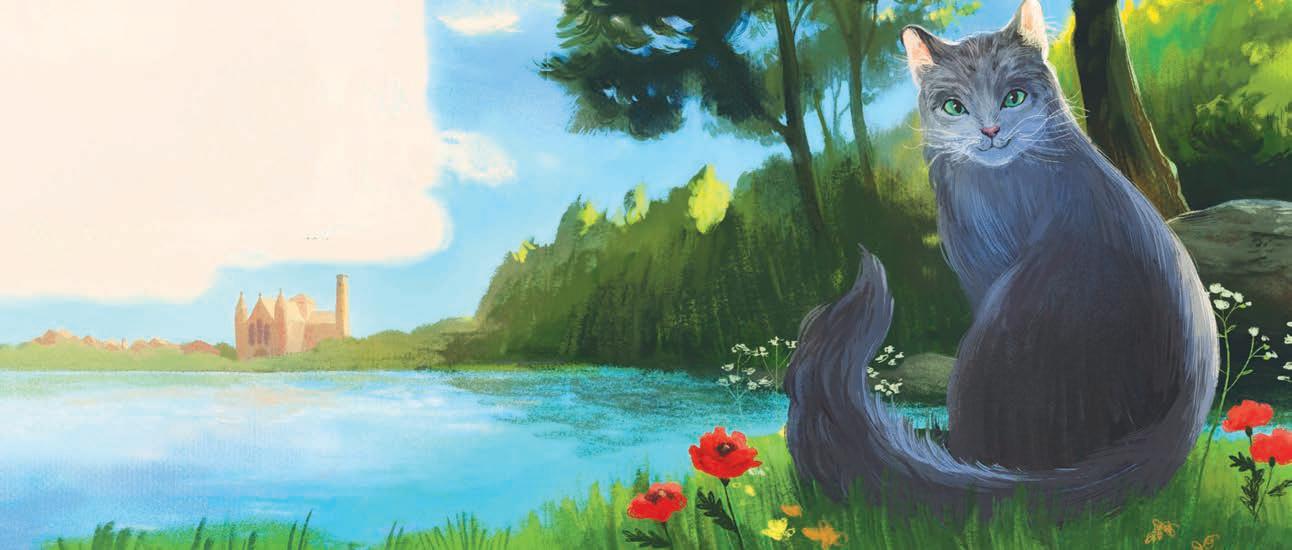
45 minute read
John Ellis
Beware burst pipes in a freezing February
BY JOHN ELLIS
Advertisement
FINANCIAL ADVISOR
IRISH WATER have appealed to homes and businesses to take preparatory steps to prepare for freezing weather and to conserve water. At the time of writing the long-range forecasts for February is suggesting a very rainy month but in the short term we could expect some freezing conditions which can lead to a higher-than-normal volume of burst pipes.
A burst pipe can cause severe damage to your home and lead to the loss of valuable water. Even a small leak can lead to expensive repair bills and a disrupted water supply. erefore, Irish Water are asking home and businessowners to take some simple steps to winter-proof their premises over the coming months.
Tom Cuddy, Head of Operations, Irish Water, said: “With temperatures often dipping below zero at this time of year, we are appealing to homes, businesses and those responsible for unoccupied buildings to check for leaks whilst adhering to current public health regulations and advice, and to turn o water where it’s not needed.” ey want customers to check outside pipes that can freeze and burst during periods of cold weather and report leaks immediately that they see on the public network to 1800 278 278.
Irish Water o er the following as a guide only and if you have a basic knowledge of plumbing the following tips will help you locate and thaw a frozen pipe or make an emergency repair to a burst pipe but if you are at all unsure of what to do, turn o the supply and call a registered plumber.
What should you do if you have a frozen pipe? • Protect or move anything which might be damaged if the pipe bursts when thawed • Turn o the water supply. e stop valve is usually located under the kitchen sink • Turn o the stopcock in your cold-water tank, usually located in the attic • Check the water pressure in appliances such as taps and toilets to see if it is lower than usual • Locate the general area where you think there may be a frozen pipe and check for visible pipes that are not insulated, pipes that feel much colder than others, have nearby draughts or damage • en turn on nearby cold taps to relieve pressure on the frozen pipe. NEVER turn on the hot taps. • aw the pipe and if the pipe and ttings are not cracked or broken, you can try gently thawing the pipe. Use a hairdryer on the lowest setting to gently warm the pipe, starting at the end nearest the tap and NEVER attempt to thaw out frozen pipes by switching on your immersion, central heating, blow torch etc. What should you do if you have a burst pipe? • Act as soon as possible to limit the damage by turning o the water supply as instructed above. • Drain the system by turning on all the cold water taps and ushing the toilets. • Switch o the central heating and immersion. If you use solid fuel, let it die out and when the water heating is completely o , turn on the hot taps to further drain the system
If water from a burst pipe is leaking near any sockets, switches, or appliances, switch o the mains if it is safe to do so. If the switch is wet, do not touch it but instead call a quali ed electrician.
You can make a temporary repair to a burst pipe by binding it tightly with a cloth or tape but replace this as soon as possible by a permanent repair carried out by a quali ed and registered plumber.
Ensure your hot water system is re lled BEFORE you switch back on your immersion or boiler.
If you have a shared water supply e.g. if you live in an apartment building, ensure you have access to the stop cock. is is usually located where the water supply enters the building and check with your neighbours that turning o the water has not a ected their supply.
Irish Water encourages people to visit their Winter Proo ng page for more tips at https://www.water.ie/help/ supply/winterproo ng
john@ellis nancial.ie 086 8362633.
COMPETITION WINNER
Mary Kearney - Winner of the Quiz
Congratulations to Mary Kearney, Oldtown, omastown, Co. Kilkenny who is the winner of the quiz competition sponsored by John Ellis – Financial Advisor
Mary collected her prize of €100.00 One For All Card from John Ellis at the o ce of e Kilkenny Observer, Friary Street, Kilkenny.

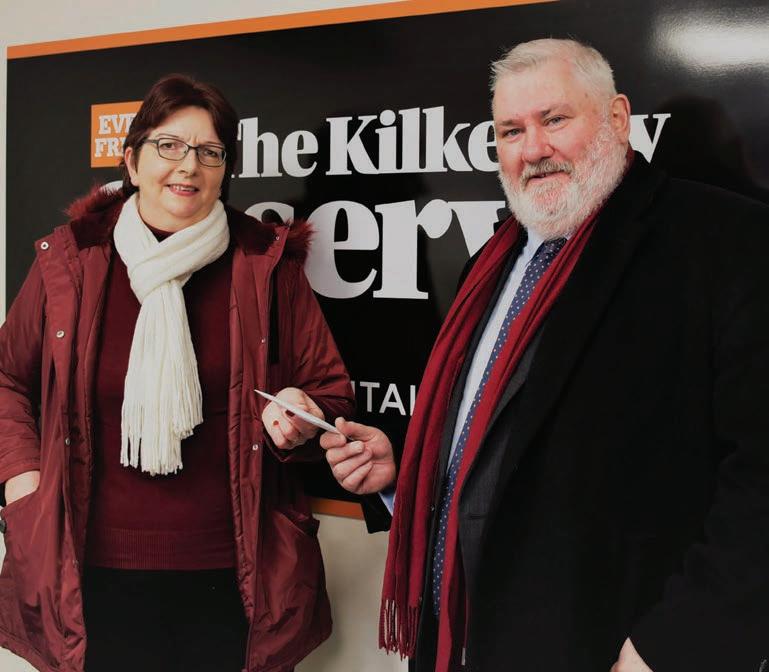

New poems on the Poetry phone
KILKENNY County Council Arts O ce Poetry Phone has a new selection of poems featured for February – March 2022, selected by writer and poet Colm Keegan.
Colm Keegan is an award winning writer and poet from Dublin, Ireland. His rst book “Don’t Go ere” was released in 2012 to critical acclaim. His latest collection “Randomer” is now available from Salmon poetry. His debut fulllength play “For Saoirse” was staged in Axis eatre and shortlisted for the Fishamble New Writing award in 2018. His short play “Something Worth Saying,” commissioned for the Abbey eatre’s Dear Ireland project in 2020 was called ‘exquisite and devastating’ by reviewer Emer O’ Kelly.
Everyone is welcome to the poetry phone. Just dial 1800 272 994 to listen to one of twelve wondrous poems written by Kilkenny poets. e poems are beautifully recited by Kilkenny actors Susie Lamb and Ger Cody.
Here you will nd poems of memory, recollection, nature, nurture and place which will bring a smile to your heart, give you a sense of solace and comfort and some will take you back in time. ey are poems of real kinship, understanding and connection.
Please pick a number between 0 and 9. All of the poems were written by Kilkenny poets and previously published in our annual Kilkenny Poetry Broadsheet. e selected poems can also be listened to on the Arts O ce Blog which features biographies of each poet, follow the below link: http://kilkennyartso ce. ie/kilkenny-poetry-phonecolm-keegans-selection/ Enjoy
Colm Keegan


FOR millions of patients who have lost limbs for reasons ranging from diabetes to an accident, the possibility of regaining function through natural regeneration remains out of reach. Regrowth of legs and arms remains the province of salamanders and superheroes.
But in a study published in the journal Science Advances, scientists at Tufts University and Harvard University’s Wyss Institute have brought us a step closer to the goal of regenerative medicine.
On adult frogs, which are naturally unable to regenerate limbs, the researchers were able to trigger regrowth of a lost leg using a ve-drug cocktail applied in a silicone wearable bioreactor dome that seals in the elixir over the stump for just 24 hours. at brief treatment sets in motion an 18-month period of regrowth that restores a functional leg.
Many creatures have the capability of full regeneration of at least some limbs, including salamanders, star sh, crabs, and lizards. Flatworms can even be cut up into pieces, with each piece reconstructing an entire organism. Humans are capable of closing wounds with new tissue growth, and our livers have a remarkable, almost atworm-like capability of regenerating to full size after a 50% loss.
But loss of a large and structurally complex limb — an arm or leg — cannot be restored by any natural process of regeneration in humans or mammals. In fact, we tend to cover major injuries with an amorphous mass of scar tissue, protecting it from further blood loss and infection and preventing further growth. e Tufts researchers triggered the regenerative process in African clawed frogs by enclosing the wound in a silicone cap, which they call a BioDome, containing a silk protein gel loaded with the ve-drug cocktail.
Each drug ful lled a di erent purpose, including tamping down in ammation, inhibiting the production of collagen which would lead to scarring, and encouraging the new growth of nerve bres, blood vessels, and muscle. e combination and the bioreactor provided a local environment and signals that tipped the scales away from the natural tendency to close o the stump, and toward the regenerative process. e researchers observed dramatic growth of tissue in many of the treated frogs, recreating an almost fully functional leg. e new limbs had bone structure extended with features similar to a natural limb’s bone structure, a richer complement of internal tissues (including neurons), and several ‘toes’ grew from the end of the limb, although without the support of underlying bone. e regrown limb moved and responded to stimuli such as a touch from a sti bre, and the frogs were able to make use of it for swimming through water, moving much like a normal frog would.
“It’s exciting to see that the drugs we selected were helping to create an almost complete limb,” said Nirosha Murugan, research a liate at the Allen Discovery Centre at Tufts and rst author of the paper. “ e fact that it required only a brief exposure to the drugs to set in motion a months-long regeneration process suggests that frogs and perhaps other animals may have dormant regenerative capabilities that can be triggered into action.” e researchers explored the mechanisms by which the brief intervention could lead to long-term growth. Within the rst few days after treatment, they detected the activation of known molecular pathways that are normally used in a developing embryo to help the body take shape.
Activation of these pathways could allow the burden of growth and organization of tissue to be handled by the limb itself, similar to how it occurs in an embryo, rather than require ongoing therapeutic intervention over the many months it takes to grow the limb.
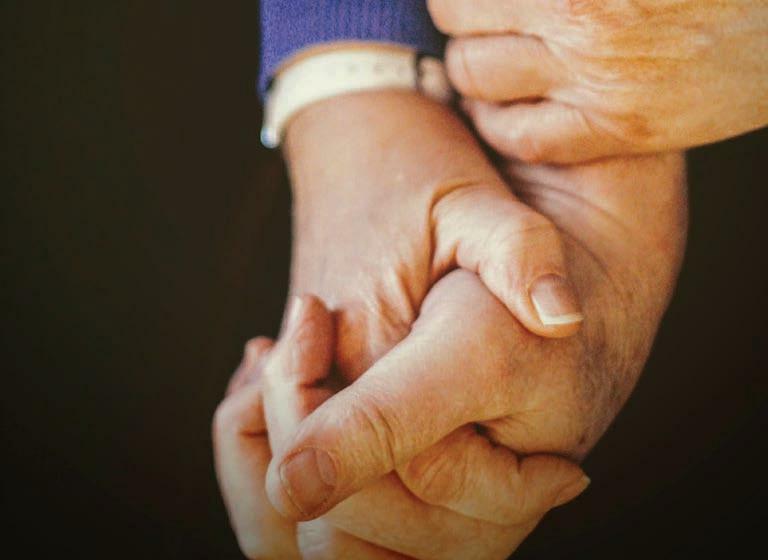
How the BioDome works
Animals naturally capable of regeneration live mostly in an aquatic environment. e rst stage of growth after loss of a limb is the formation of a mass of stem cells at the end of the stump called a blastema, which is used to gradually reconstruct the lost body part. e wound is rapidly covered by skin cells within the rst 24 hours after the injury, protecting the reconstructing tissue underneath.
“Mammals and other regenerating animals will usually have their injuries exposed to air or making contact with the ground, and they can take days to weeks to close up with scar tissue,” said David Kaplan, Stern Family Professor of Engineering at Tufts and co-author of the study. “Using the BioDome cap in the rst 24 hours helps mimic an amniotic-like environment which, along with the right drugs, allows the rebuilding process to proceed without the interference of scar tissue.”
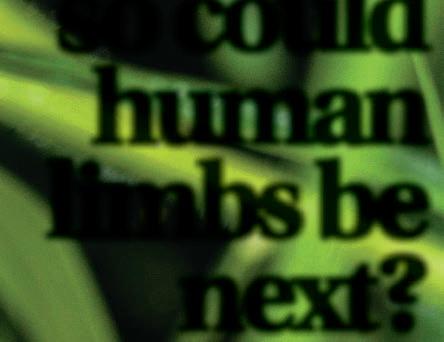
JEFF BEZOS is on a mission to conquer ageing. He has just recruited Hal Barron from GlaxoSmithKline to help lead Altos Labs, the ambitious new anti-ageing company with billions of investment. So what does science say about this? Could we beat ageing?
Ageing isn’t just a change in how we feel or look; ageing happens at a cellular level. In a lab culture dish, adult skin cells divide roughly 50 times before stopping. But skin cells from a newborn baby can divide 80 or 90 times. And on the ip side, cells from someone elderly divide only around 20 times.
Ageing is also evident in our genes. Our genetic material is modi ed over time — chemicals can be attached that change which genes are switched on or o . ese are called epigenetic changes, and they build up as we age.
Another kind of change takes place at the ends of our cell’s DNA. Repeating segments of DNA called telomeres act like the plastic tip of a shoelace, preventing the twisted coils of genetic material from fraying at the ends or knotting together. But these telomeres shorten each time a cell divides. We don’t know if short telomeres are merely a mark of ageing, like grey hair, or are part of the process by which cells age.
To keep alive and keep dividing, immune cells stop their telomeres shortening when they multiply, as do cancer cells. is is probably a contributing factor in their apparent immortality. Treatments that stop telomerase from working also show promise against cancer (although cancer cells can evolve resistance).
Given that ageing has such a profound e ect on our cells and genes — the e ects mentioned here being just some examples — a much bigger question emerges: why does this happen? Why do we age?
We can describe a lot of what happens during ageing at the level of what physically happens to our genes, cells, and organs. But the fundamental question of why we age is still open. In all likelihood, there is more than one correct answer.
Of course, nobody knows whether Bezos’s company can succeed in helping extend the human lifespan. But what is clear is that by studying ageing, exciting new discoveries are bound to emerge. Never listen to anyone who says the big questions have already been answered.
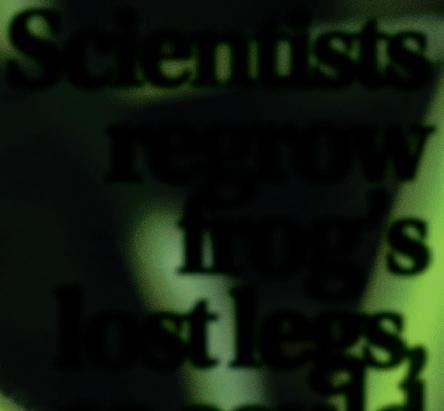
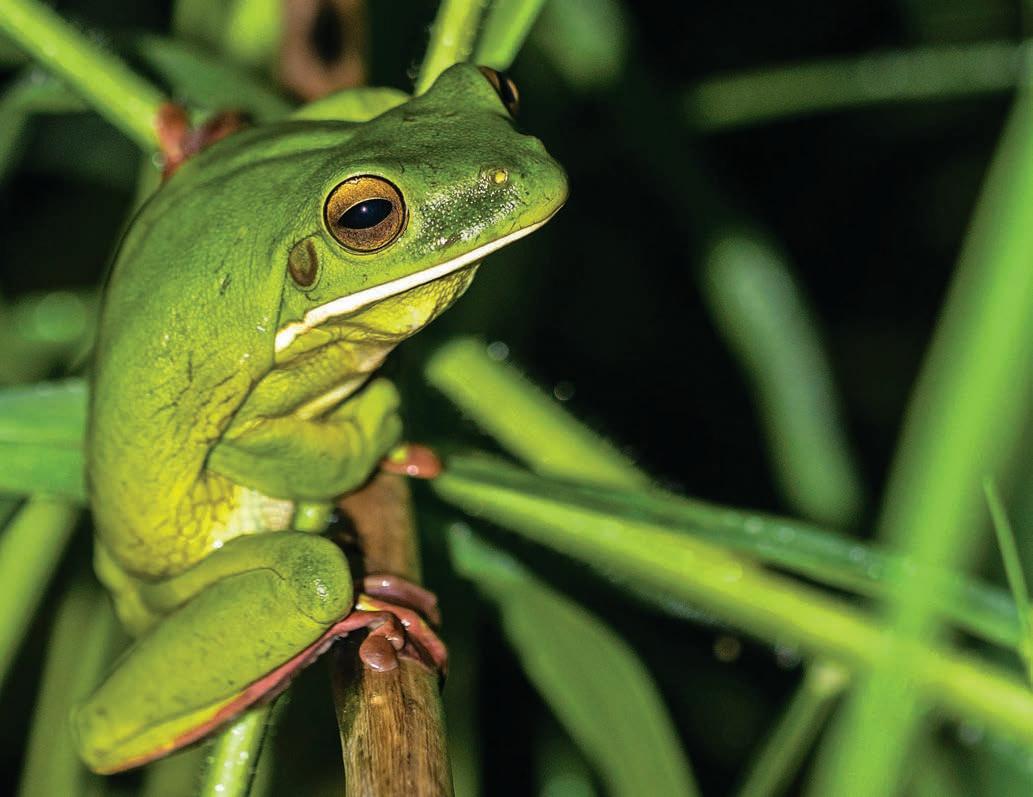
Jeff Bezos on mission to stop us ageing
Scientists regrow frog’s lost legs, so could human limbs be next?
Next steps in frogs and mammals
Previous work by the Tufts
team showed a signi cant degree of limb growth triggered by a single drug, progesterone, with the BioDome. However, the resulting limb grew as a spike and was far from the more normally shaped, functional limb achieved in the current study. e ve-drug cocktail represents a signi cant milestone toward the restoration of fully functional frog limbs and suggests further exploration of drug and growth factor combinations could lead to regrown limbs that are even more functionally complete, with normal digits, webbing, and more detailed skeletal and muscular features.
“We’ll be testing how this treatment could apply to mammals next,” said corresponding author Michael Levin, Vannevar Bush Professor of Biology in the School of Arts & Sciences, director of the Allen Discovery Center at Tufts, and associate faculty member of the Wyss Institute.
“Covering the open wound with a liquid environment under the BioDome, with the right drug cocktail, could provide the necessary rst signals to set the regenerative process in motion,” he said. “It’s a strategy focused on triggering dormant, inherent anatomical patterning programs, not micromanaging complex growth, since adult animals still have the information needed to make their body structures.”
10
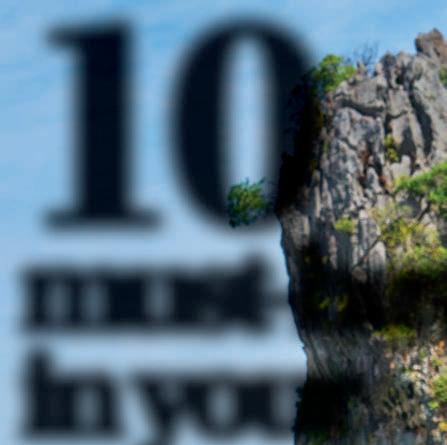
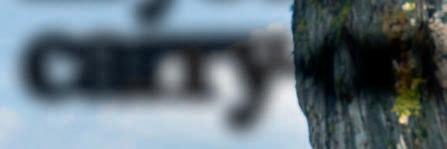
must-haves in your carry-on
EVEN experienced packers admit that packing for a ight can sometimes be a daunting task. It is even more daunting for rst-timers. While some packing lists can be really helpful, they sometimes get overly detailed thereby making travellers pack items they probably might not need.
1. BACKPACK
Suitcases are necessary to carry more spacious items but a backpack will come in handy when it comes to carrying important things needed to be in one’s possession at all times. is is because most (small) backpacks can be placed right under a passenger’s seat which makes it easier to reach for the bag and take out something easily. Suitcases are usually out of immediate reach and they also tend to get lost sometimes. It won’t help if an essential item such as a charger is in a lost suitcase.
2. DOCUMENTS
Passports, ID Cards, travel visas, and travel insurance are the most important travel documents to never forget. Some of these documents are required before access to ights so be sure to bring them along. Due to the pandemic, many countries now require passengers to provide health documents such as proof of Covid 19 vaccination before they can be allowed access into the country.

3. CHARGER
Wireless charging ain’t just a friend, it’s the future. Locating an outlet and plugging in a charger is the second thing many travellers do after sitting down in their passenger seat. Imagine dipping a hand into your bag and not being able to nd a charger. Can be pretty heartbreaking. To avoid being in this type of situation, be sure to include a charger on the packing list. Charger adapters also come in handy when there are no available outlets to plug in a USB cable. Travellers watching movies or working on some tasks on their laptops during the ights should include their laptop chargers as well to keep the device on.
4.INFLIGHT ENTERTAINMENT
is is a no-brainer item to include on the packing list but some travellers might still forget it. e reason why it is important is not so far-fetched as many airlines require mobile phones to be in ight mode during the ight since cellular radio has been deemed hazardous to smooth ying. is inevitably means there might be no access to the internet for the majority of the trip. Although some airlines o er Wi-Fi service, it can also be restricted in some situations. Imagine sitting throughout the ight doing absolutely nothing. Feels tiring and except the view of the sky from the tiny airplane window is enough entertainment for you, be sure to stock up on some entertainment before the trip. Games, books, podcasts, and o ine videos are cool things to help deal with boredom.
5. FAVORITE SNACKS
To be honest, airplane food is not for everybody! ose strange combinations can ruin one’s intestines in seconds and make the rest of the ight uncomfortable. ere’s no need to pretend. Travellers should take some favourite snacks to have an alternative if the food served during the ight is not compatible with their stomachs. It can also serve as a bonus to support the food served by the airline service because sometimes the quantity might not be enough to satisfy even a veyear-old child.
6. HEADPHONES
Headphones do not just o er an enjoyable consumption of multimedia content, they also o er privacy, and noise-canceling headphones o er even more privacy as it cancels the surrounding noise. Many travellers can’t help it when they are stuck on the plane for hours with noisy neighbours and it’s in these cases that these ear blocking speakers will come in handy to ensure no one has to put up with all that noise.
7. PORTABLE CHARGER
A portable charger is a device that can be used to extend phone battery life in the case where charging outlets are not available at the moment. ey’re easy to carry and can be very useful in some situations. e last thing one wants is to get stuck on the plane holding a phone with a dead battery.
8. EXTRA PAIR OF SOCKS
e feet can get really cold during ights, especially long ones and that discomfort may, unfortunately, continue if the destination’s weather is also cold. A pair of socks is important in this case to keep the feet warm throughout the ight.

9. YOUR TOOTHBRUSH
Toothbrushes and Toothpaste are so tiny, they take up little space hence they should always be included in one’s plane travel kit, especially during long ights. A bad breath can ruin a warm welcome.
10. A WATER BOTTLE
Of course, airplanes o er water to passengers but to avoid getting short of some euro, it’s better to bring an empty water bottle and then ll it up at the airport re lling station after getting the empty water bottle past the security.
Pick the ‘worst seat’ on the plane!
UNLESS you can afford to splash out on business class tickets, travelling in an aeroplane can be pretty uncomfortable — especially if you’re flying long haul.
Whether you’re someone who likes to stare out the window for the entire journey, you’re up every half an hour needing the loo or you’re the unlucky one who always stuck with a kid kicking them in the back for the entire trip.
Thankfully one frequent flyer has revealed a sneaky way to get around the latter happening on your next trip - and it involves carefully selecting where to sit.
While most travellers stress over picking the best seat on a plane, John Burfitt says he always chooses the ‘worst’ seat on a plane when he travels — the window seat at the back of the plane, by the toilets.
Writing for escape.com. au, he claimed that it can actually be the most relaxing place to sit. John explained how after once spending an entire flight being kicked in the back by a passenger, he vowed never to have a similar experience again.
Towards the end of the journey he walked down the aisle to go to the bathroom and soon realised there was nothing behind the last row of seats but a wall, so if he sat there, no one could ever kick him in the back again.
“In that instant, I decided the back row would be the only place I would sit on a long flight from now on,” he wrote.
“Sure enough, on my next flight, I booked into the back row of the cabin and, even better, my seat was the one right next to the window. As I nestled into that corner, I discovered what true airline love is about. I had just found the best seat on the plane.”
THIS WEEK, in our look at the recently published book of poetry and prose by e Kilkenny Involvement Centre and e Recovery College, we feature work from Robert O’ Neill, Kassie O’Mahony and Grace Power .
Much More Than Words
If ever a book deserved the award for ‘ e Perfect Title’ surely that accolade must go to a new compilation of poetry Much More an Words. Indeed its very title describes comprehensively the diversity of the treasures to be discovered within its covers. is volume of carefully crafted poems, interspersed with prose and enhanced with well-chosen images, is the second collection produced by e Involvement Centre Kilkenny and the rst in a joint venture with e Recovery College. e Kilkenny Observer Newspaper is delighted to promote the work of e Involvement Centre and e Recovery College, and so, will publish a selection of their work over the coming months. ‘Much More Than Words’ can
be purchased at the following Kilkenny outlets: Bargain Books, The Butterslip Khans Bookshop, James’ Street & The Book Centre, High Street. Price: €10
Robert O’Neill We Wear our Masks M Kassie O’Mahony
Róisín Grace Power
We wear the mask that guards and serves, In a world now struggling to life preserve, We now depend upon this simple cloth that muzzles us from fear of war. A war upon our very existence, Let’s wear the mask, without resistance. What is this mask? What’s its design? Is it a modern Turin shrine? Of cloth imprinted with souls of woe And su ering, yet modelled so. Is it our armour in a war? Preventing death from our dark doors? An altruistic battle cry? We don the mask, through wearied sighs.

But this is not living , not the life we know, And every dance oor’s empty now, And ever choir’s song is sung, And football boots for now are hung in cold and musty dressing rooms, We wear our masks, despite the gloom. When the sounds of children’s playgrounds stops In schools, and parties, and soulless, desolate shops, A deep resounding bell is knelled, We’ll wear the mask, but why, do tell… is debt we pay will be worth it all To once again return to small pleasures, Small joys that we once had We wear the mask, it’s not so bad. With pride we wear the mask and smile, A smile that’s hidden now for some time. Our eyes rely on showing glee, approval and normality. But nothing’s normal, this is not life. Yet uni ed deny our strife, by this mask. We’ll wear the mask. And now it’s fashion, styles and shapes, We wear these masks, to convince ourselves, at one day soon, it’ll be worthwhile With torn and bleeding hearts we smile. at while’s too long now, it feels unending and all the while our lives are spending in the cold con nes of grim complicity We’ll wear the mask, for you, for me. So underneath this mask we smile, but, our hearts cry. Our souls try still to clap and sing, fondly remember every living thing of normal life, Real normal life. Without the mask. And all is left is hope at in a fanfare of discharge We’ll say goodbye and masks discard, For though we wear them, day on day, is is not living, life shouldn’t be this way.

Robert O’Neill we used to lie on trampolines together on hot summer evenings. our bare backs scalded from the canvas pressed against our skin. we would drown ourselves in ice lollies and make ourselves sick from skittles. we’d attempt to dance like broadway stars and perform tricks like olympic gymnasts. you taught me how to play hurling, cricket, introduced me to the world of sport. i was no good but you, you were an all star champion in the making. i used to force you to make up silly routines and throw me around like a rag doll. we never understood makeup or clothes or boys. we only understood hurleys and lms and noise. we’d play tip the can and tag making sure everybody knew we ruled the street. we’d split pints of ice cream even though it made me nauseous and i’d make you eat copious amounts of sugary foods. at sleepovers we made forts from blankets but they weren’t forts to us, they were castles. we’d fall asleep at six am and wake at seven to watch the latest episode of dance moms, devouring bowls of milky cereal at the same time. and then one day, all that changed. you stopped knocking on my door asking if i wanted to watch your dad play a match. i stopped going training, you stopped going dancing. our dance moms’ days were done. my hurley sits idle in the shed because the only time it got use was when i was with you. I’m sure your dance shoes don’t get much wear anymore. you were shocked when i cut my hair because i ‘took so much pride in it when i was young’. but we’re not so young now anymore. we were innocent, we were fun, we were young, we were kids. and now i don’t know what we are. but i know, that you were my childhood best friend.


Kassie O’Mahony “Take no heed of how time may y, a eeting kiss to say goodbye. Heartstrings broken but tied with thread, words of love beside the bed. e rabbit called to take your hand, it was time to go to wonderland.”

Grace Power
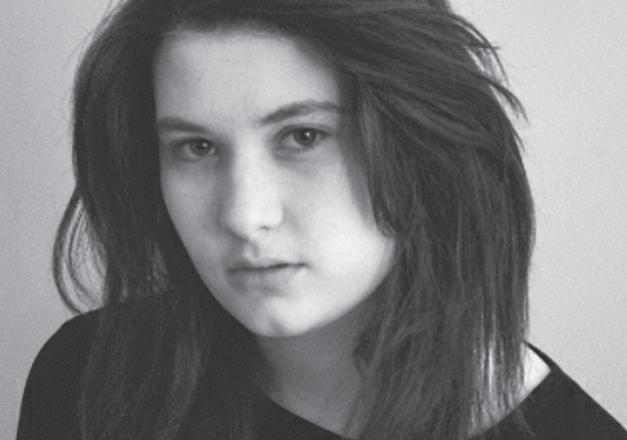
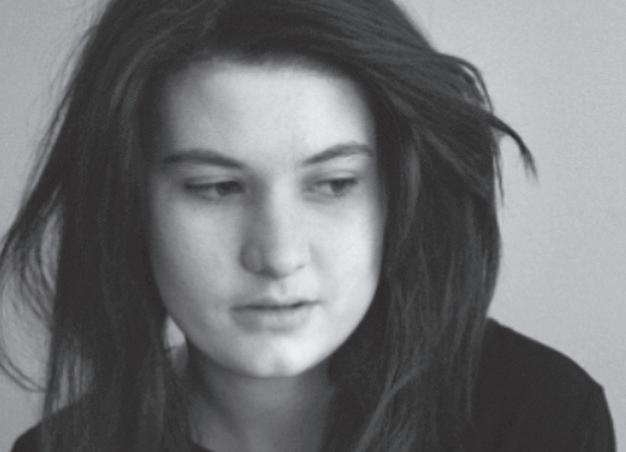
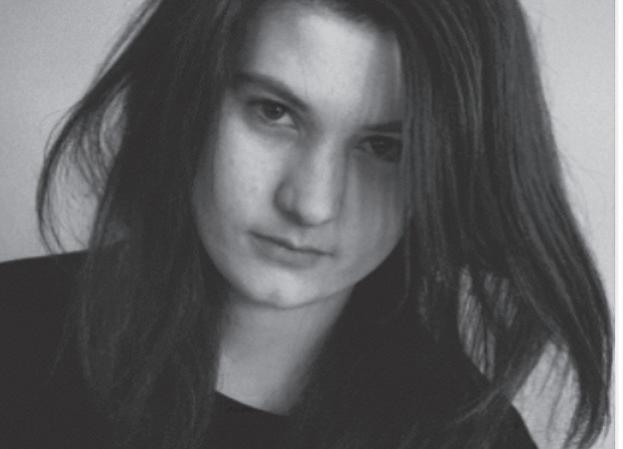
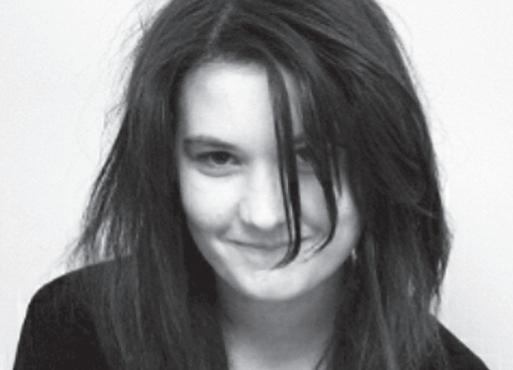



THE Ibec group that represents the property and construction sector, Property Industry Ireland (PII), has said that existing mortgage measures in Ireland are outdated and need to be amended to re ect new economic realities. e call comes as PII publishes its submission to the Central Bank’s review of ‘macroprudential’ mortgage measures.
Existing mortgage measures were introduced in 2015 to provide stability and ensure prudent lending to support Irish consumers following the global economic recession. ese measures have had their desired e ect for the last six years but the economic context in Ireland has changed signi cantly since the 2016 rules were introduced and Ireland’s mortgage measures are now restricting home ownership opportunities for a generation of rsttime buyers, young families and lower income households. PII believes Debt Service Ratio, or DSR, should replace the current Loan-toIncome (LTI) limit.
Director of PII David Du y said: “PII is not calling into the question the importance or the bene ts of the mortgage measures. ey are an important pillar to managing the systemic and cyclical risk within the sector.
“However, the design and calibration of these measures needs to be amended to re ect that the economic landscape is signi cantly different to when the existing measures were introduced in 2015, including the signi cant reduction in and much wider availability in xed long-term interest rates.”
Ireland’s current mortgage measures are amongst the strictest in the EU. e existing Loan-to-Income (LTI) model limits mortgage lending to that of 3.5 times the income of the household. e average price of a new home sold to household buyers in Ireland in 2020 was €350,000, requiring the purchaser to have a single or combined income of €90,000 to qualify for a 90% LTV mortgage. Only roughly 4% of households in Ireland have incomes at or above this level.
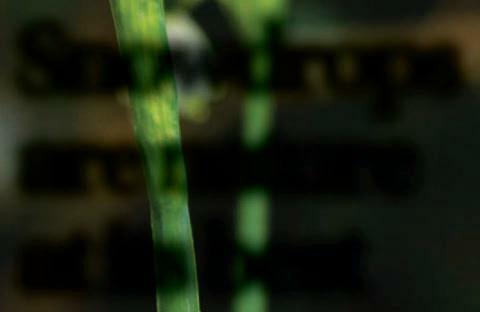
Snowdrops are nature at its best
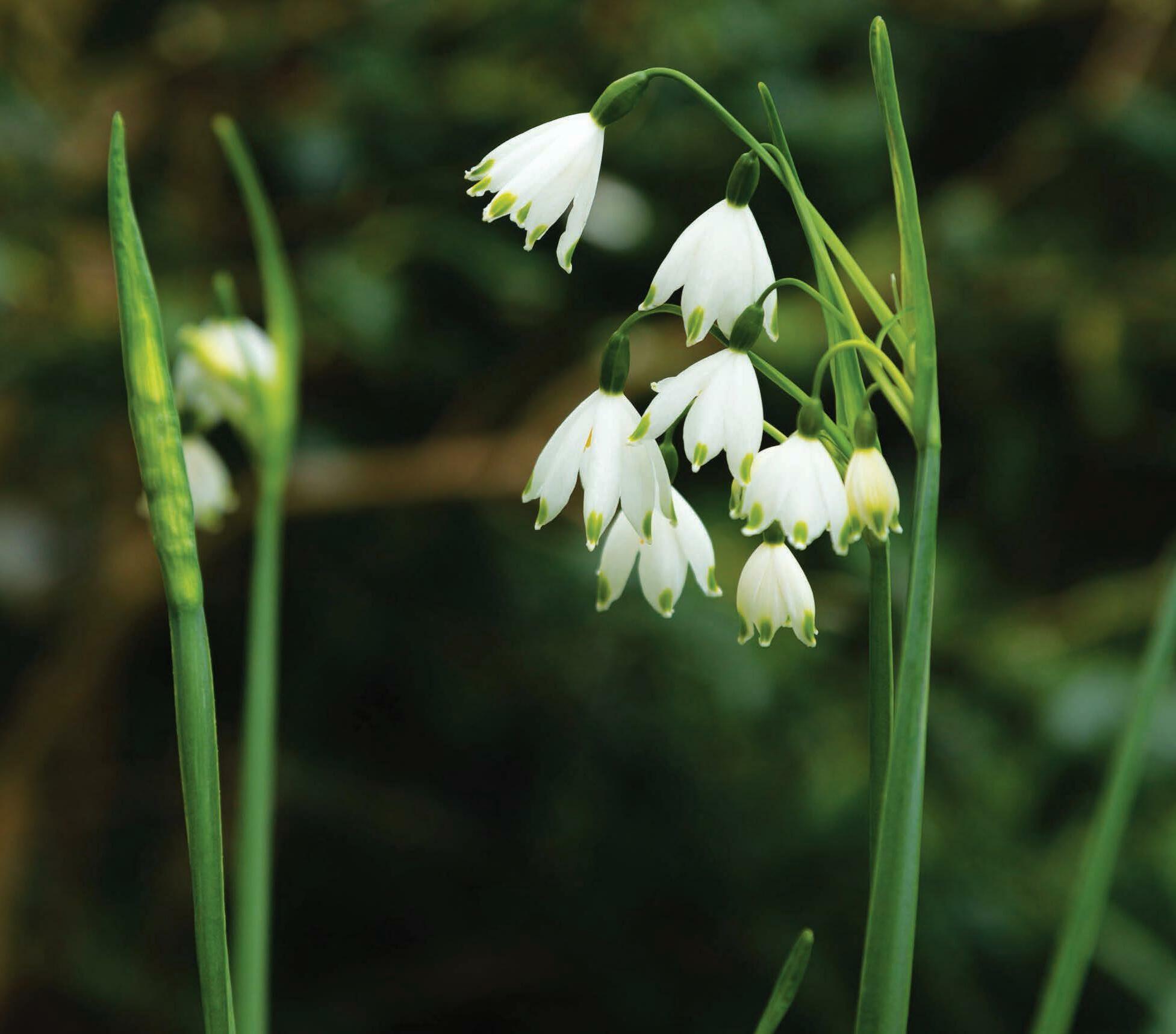
ALTAMONT GARDENS in neighbouring Co Carlow has the largest public snowdrop collection in Ireland, boasting 150 named varieties of the ower. e 40-acre estate, on the banks of the River Slaney near Tullow, is now holding its 21st ‘Snowdrop Month’.
“I think the snowdrop, because it’s so small and it survives a very cold winter, a very long winter, I think it’s bringing the light out of the darkness. And I think it’s heralding spring,” said gardener Pauline Dowling. “We were open during the pandemic but only people within ve-10kms could come in and walk. ey told us the garden saved their life because they were able to come out of their houses and walk around and get really restored by the garden.
“It’s very much a living garden. It’s a healing garden. It’s full of wildlife and it’s full of nature at its best. Everybody can come now from any distance.
“ e sunlight at the time of the year is just amazing. We would love everybody, particularly in the South East, to come visit us now and experience that.”
Ms Dowling said: “She was given a present of a snowdrop called Drummond’s Giant and it was given to her by her neighbour, Mrs O’Neill. at started the collection about 60 years ago. So, she fell in love with the snowdrop.
“After that, herself and her sister used to visit old, derelict gardens. ey used to have a look and see if there was any snowdrop of interest. We have Straffan which is another Irish variety. We have Liam Scho eld. We have Mrs McNamara.”
Pauline Dowling says “nature is at its best” at Altamont. For her, the snowdrops at Altamont Gardens are a small symbol of hope after winter.
She said: “ e colour is pure white with just a few speckles of green or yellow. ‘ e snowdrop collection was started by Corona North, the former owner of Altamont Gardens, in the 1960s.

Warning as milk replacer prices up 20%
FARMERS have been advised not to compromise on quality, as milk replacer prices increase by up to 20pc this year
George Ramsbottom, Teagasc Dairy Specialist, warned that cheaper milk replacers derived from plant sources were not recommended, particularly for young calves.
Speaking on a Teagasc webinar , he said milk replacers were trading anywhere between €45 and €60 a bag and are understood to have risen further in recent days. However, he warned there was “huge” variation in quality.
Mr Ramsbottom said there were four “non-negotiables” that have been agreed by technical experts in Animal Health Ireland on milk replacer for young calf care.
“ ese are protein content 22-26%; fat content 16-20&; ash content 7-9%; and bre content less than 0.1%,” he said.
“For young calves, those proteins should be derived from milk sources.
“ e reason for that is you could have a high protein content in your milk replacer, but the amino acid content might not be right,” he said.
“Proteins from plant-derived sources may not have those quality amino acids to ensure good growth in your calf.” THE Minister for Agriculture, Charlie McConalogue TD, is putting pressure on the dairy industry to come up with a plan to reduce its emissions.
In a series of recent meetings with farm organisations and coops, the minister announced the creation of a high-level industry committee chaired by former Teagasc director Prof Gerry Boyle to develop a plan in the coming weeks.
It is understood the rst step will be to stabilise emissions rapidly, so technologies in development can deliver the reductions to the level targeted under the Climate Action Plan.
However, the Irish Cream Milk Supplier Association (ICMSA) said an arbitrary cap would do “irreparable damage” to “the main driver” of Ireland’s rural economy. e Irish Farmers’ Association (IFA) said it would not allow the sector become a “twilight industry”. e expected halt to dairy expansion will come less than seven years after the abolition of milk quotas; since then cow numbers increased from 1.3m in 2015 to 1.5m in 2020. e Irish Co-operative Organisation Society (ICOS) said its main priority entering these talks would be to protect “productivity growth” within the sector and said it was essential to support family farm units.
According to e Farming Independent, the minister told the meetings that, while total cattle numbers have been stable in recent years, this was only due to a decrease in suckler cows — there has been an increase in dairy cows, which have higher levels of emissions per head.
It is understood that Mr McConalogue highlighted that of Ireland’s 16,000 dairy farmers, up to 4,000 are still in “expansion mode” and noted the development of some very large units and some farmers with multiple platforms. However, he is also understood to have stressed that the “shutter will not be thrown down” for those who see dairying as a viable career choice.
Climate change pressure on dairy farmers

Feature

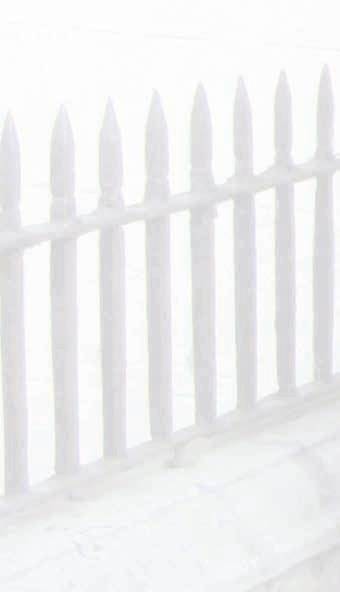

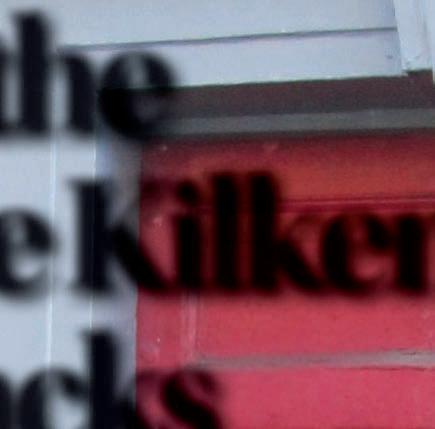
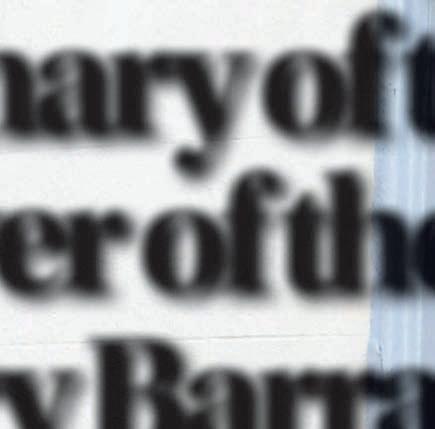

February 7th is a special day here in Kilkenny, marking as it does the centenary of the takeover of the Military Barracks. e Kilkenny Observer is grateful to Larry Scallan for his research into this period in our history and we are delighted to publish his observations. Over the coming two issues, we look at the history of the Barracks including an account given by James Comerford in his book ‘My Kilkenny IRA Days’

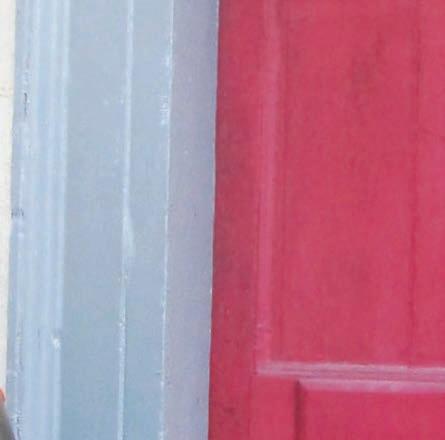
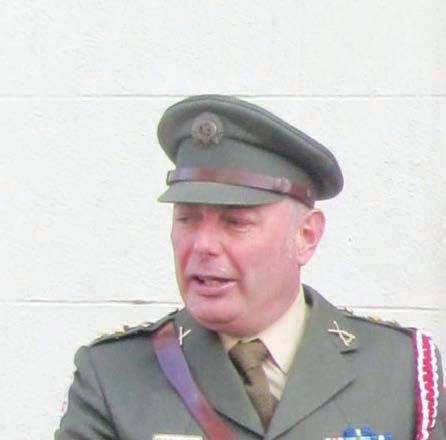
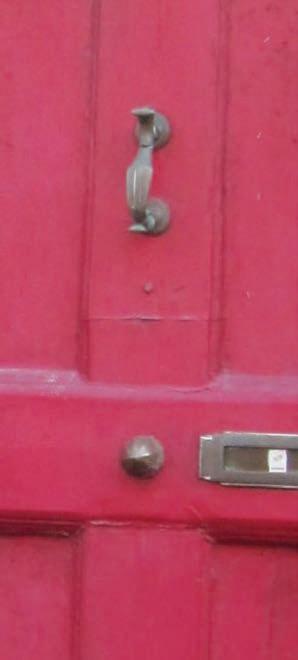
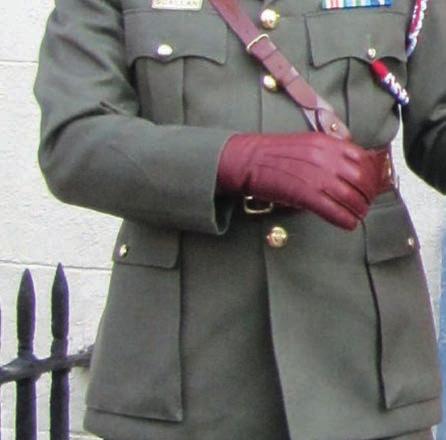
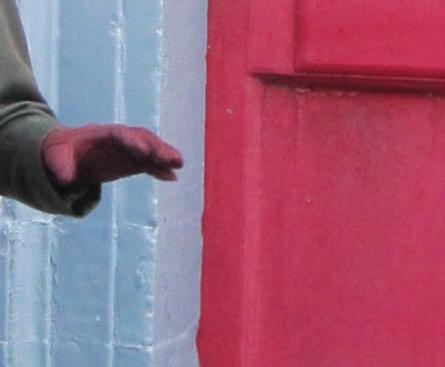

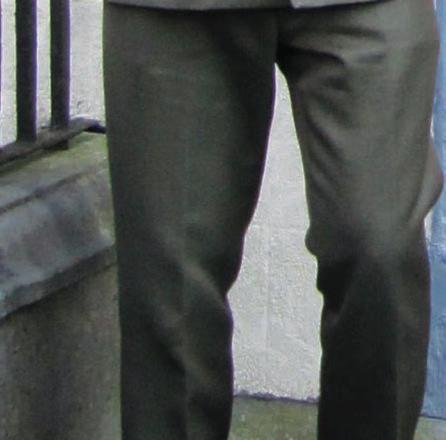
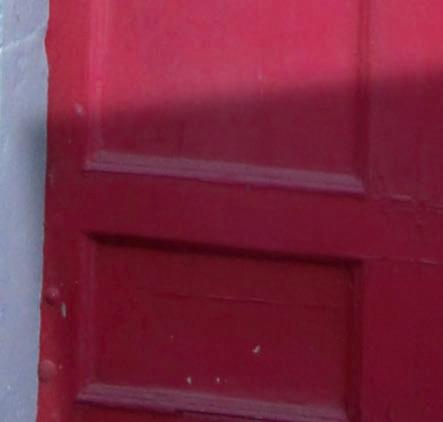
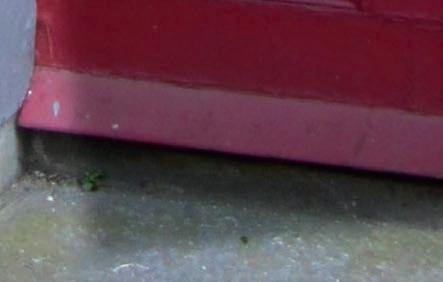
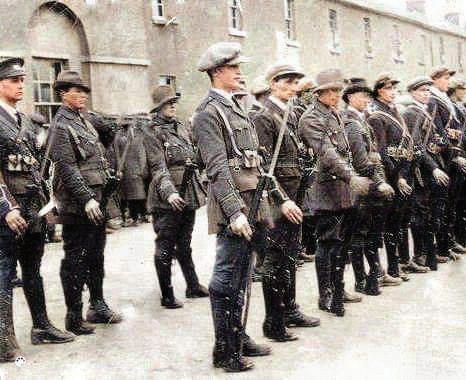




Kilkenny Brigade members on Parade. We are now approaching the centenary of the takeover of the Military Barracks, Ballybought Street, Kilkenny City. is momentous event occurred on February 7th 1922. e Barracks had been home to over sixty Infantry Regiments of the British Army since 1803. It also served as a Brigade Headquarters of Artillery from 1908, as well as being the home of various units such as King Edward’s Horse ( e King’s Overseas Dominions Regiment). is was the cavalry regiment of the British Army which saw service in the First World War. e Kilkenny Militia used the Barracks as their home base for annual training, particularly in its active service periods during the Napoleonic Wars, the Crimean War, e Boer War and of course the Great War. is twelve-acre walled village on the edge of Kilkenny City has been an ever-present feature of the city for over 220 years. It replaced two preexisting Barracks after the 1798 rebellion. ey were located o John Street (the current site of Butler Gallery) and the Horse Barracks which was in the vicinity of the brewery site. Horse Barrack Lane and Barrack Lane signpost these long-gone encampments.
Its strategic location, on the edge of an expanding city which was positioned on an economic crossroads for trade in the Southeast of Ireland, was enormously bene cial

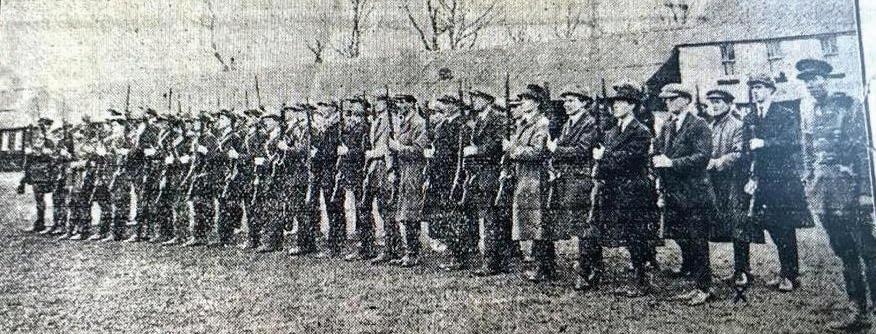
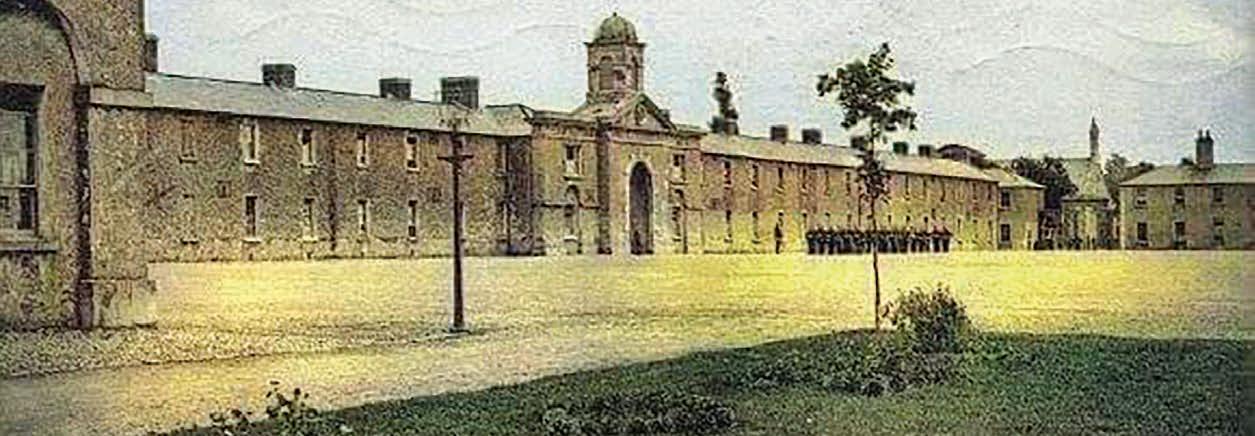
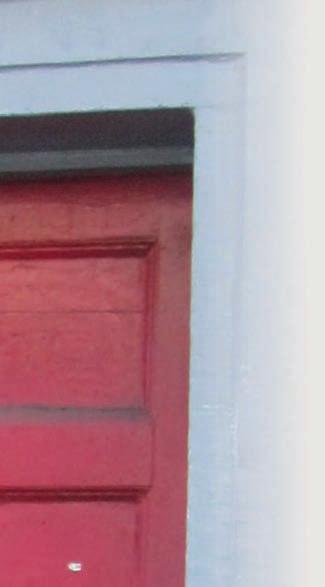
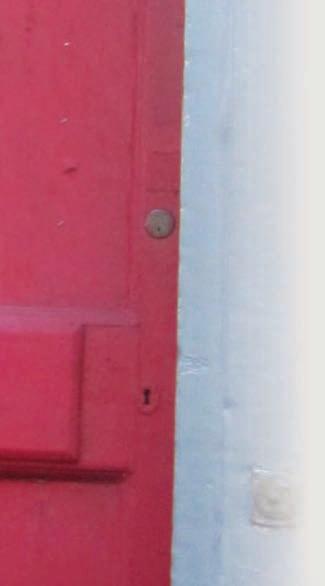

The IRA mobilizing at St James’s Park before marching through the city to take over Kilkenny Military Barracks. (Photo by Moran, Kilkenny. With thanks to Rothe House)
for the crown forces. ey used it as a strong base for enforcement and projecting military power across an extensive area and especially for conducting joint operations with the Royal Irish Constabulary during the Irish War of Independence. e high walls that enclose the Barracks now accommodate a modern light Infantry battalion called the 3rd Infantry Battalion. is is, incidentally, the oldest infantry battalion in the permanent Defence Forces. It should be noted that every soldier, airman and sailor has sworn to defend and protect the Irish State as enshrined in the Irish Constitution – a legacy of the loyalty that was espoused by those who joined the volunteers in 1914.
In contemporary Kilkenny the Barracks and its soldiers blend into the streetscape and fabric of local communities. Its members are often found in
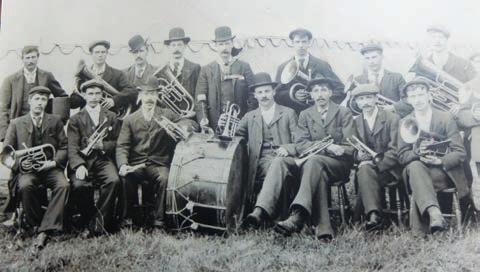
St Patrick’s Band who led the Irish Volunteers into Kilkenny Military Barracks on February 7th , to take over from the departing British troops. Column Commander, George O’Dwyer, and his wife Angela
local GAA, soccer, or other sporting clubs as players or administrators on school committees. ey are supporters of many local good causes and charities. Our Defence Forces have always been fast to respond to a request for the civil power (An Garda) or the civil authority (e.g. County Council).
With their skills and talents they provide support to the local community such as after severe weather events where they help with clean-up operations. We particularly saw their contribution to the community during the current pandemic. ey also provide prominent support to Portlaoise Prison.
local GAA, soccer, or other It was very impressive It was very impressive to see the 3rd Battalion providing the honour guard for the ceremony held in Dublin Castle on January 16th 2022 when the centenary of its handover was commemorated. to a request for the civil is all happens while power (An Garda) or the maintaining an absolute civil authority (e.g. County commitment to overseas Council). service and their altruistic attitude to proactive peacetalents they provide keeping in often di cult support to the local operational situations. community such as after One hundred years severe weather events ago the Barracks was where they help with garrisoned by the 2nd clean-up operations. Battalion of the Devonshire We particularly saw Regiment. is Regiment their contribution to the would have been involved community during the in military operations current pandemic. which involved the lethal use of force: included prominent support to among these military operations were Coolbawn (death of Nicholas Mullins and Jack Hartley), Knocknagress (death of Pat Walsh and Sean Quinn), Friary Street (death of Tom Hennessy and Michael Dermody) and the ambush at Uskerty near Coan. e Irish Republican Army, the sworn army of Dáil Éireann had fought a guerrilla type war 19191921, attacking and evading the Crown Forces and then disappearing into the local population. When this tactic was combined with an excellent knowledge of the landscape, it led to successful continuous operations to ensure denial of freedom of movement to the British military. Most Crown Forces’ fatalities in the Kilkenny Brigade area during the war were RIC members; however there are many examples of targeting of the Devonshire soldiers, the main one being the attempt of the 1st Battalion Kilkenny Brigade to trigger an ambush on Friary Street in March 1921. It is in this context that it is important to re ect and remember this seminal event in what we now refer to as our decade of centenaries.
Next week we look at an account given by James Comerford in his book ‘My Kilkenny IRA Days’. is is a highly important account as he was a member of the marching body of troops who entered the Barracks through the Ballybought Street gate under the command of Brigadier General George O’Dwyer.


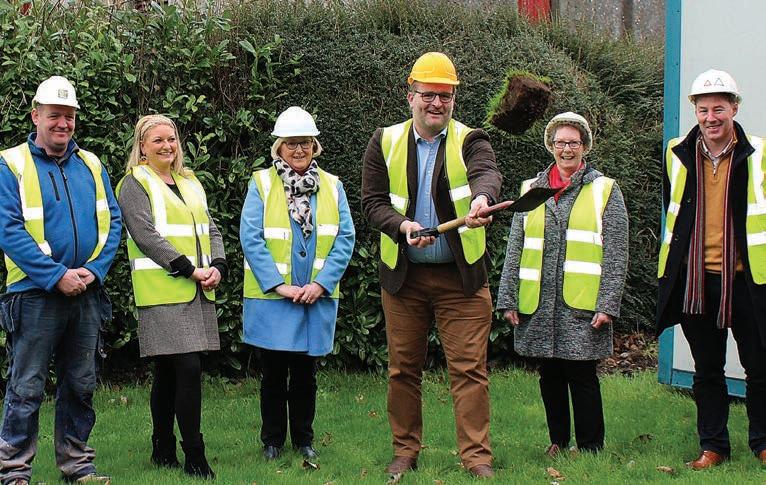
Building commences at St Brendan’s National School, Newmarket, Hugginstown
THE Board of Management, Principal, Sta , Students and Parents at St. Brendan’s National School are delighted to see the long awaited building work commence. e Department of Education and Skills approved the construction of 1 Mainstream Classroom, 1 Special Education Needs Room and a Wheelchair accessible toilet. e sod was turned by Deputy John Paul Phelan T.D. on Monday 31st January. Larry Comerford, Construction Ltd. also commenced on site on Monday.
On completion of the building it is planned to commence an after-school club to facilitate parents and students. e school community look forward to seeing this facility open, it will bring many bene ts for the students and sta .
Larry Comerford (Building Contractor), Claire Cahill ( Parents Association) , Margo Brennan (School Principal), John Paul Phelan (T.D) , Teresa Broderick (Board of Management), Brendan Moore (Architect)

Carraig Donn €39.95 u Regatta €30 u




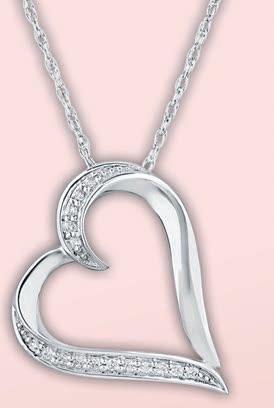

Spread the Love... ...
t River Island €33
this Valentine’s Day with the perfect gift or outfit from MacDonagh Junction Shopping Centre. Nothing screams romance quite like a proposal and the perfect Nothing screams romance quite like a proposal and the perfect proposal needs the perfect ring. Fields the Jewellers have a stunning range of diamond engagement rings to suit every style stunning range of diamond engagement rings to suit every style and budget. Not ready for that big a gesture? They also have beautiful Not ready for that big a gesture? They also have beautiful gifts including this beautiful 9ct white gold love heart pendant or a fashionable brown leather watch for that special man in your life. An evening of romance calls for a new outfit, this flowy An evening of romance calls for a new outfit, this flowy dress from Carraig Donn or cute dress from Dunnes Stores dress from Carraig Donn or cute dress from Dunnes Stores ticks all the boxes. Paired with a gorgeous lingerie set from ticks all the boxes. Paired with a gorgeous lingerie set from River Island and styled with their heart necklace to complete River Island and styled with their heart necklace to complete the look. Going for a more casual date night for Valentine’s this Going for a more casual date night for Valentine’s this year? Stay cosy with this pink cardigan from Carraig year? Stay cosy with this pink cardigan from Carraig Donn paired with this frill skirt from Dunnes Stores Donn paired with this frill skirt from Dunnes Stores perfect for an intimate dinner at home or a cosy perfect for an intimate dinner at home or a cosy brunch. Or go crazy and add a pop of colour to your brunch. Or go crazy and add a pop of colour to your outfit with love heart shoes from Skechers. Guys head to Jack and Jones to get an outfit that will make Guys head to Jack and Jones to get an outfit that will make sure to turn heads this Valentine’s. Or at least add a bit of red sure to turn heads this Valentine’s. Or at least add a bit of red to your wardrobe for the day that’s in it, with this top to your wardrobe for the day that’s in it, with this top from Regatta. Now that your sorted with the gifts and outfits, time Now that your sorted with the gifts and outfits, time for the actual date…why not keep it fun and casual for the actual date…why not keep it fun and casual with a round of bowling at Kbowl Kilkenny. with a round of bowling at Kbowl Kilkenny.
River Enjoy a milkshake from Eddie Rockets for the Enjoy a milkshake from Eddie Rockets for the Island €29 perfect ending to a perfect date. q If all else fails, we have the perfect way to say I love you…with a MacDonagh to say I love you…with a MacDonagh Junction gift card. Accepted Junction gift card. Accepted in over 30 top brands and in over 30 top brands and restaurants, it’s the perfect gift. restaurants, it’s the perfect gift.
Fields €129 q
* All prices correct at time of print
t Fields €3950
Dunnes Stores €25 u
p River Island €18 Carraig Donn €42.95 u t Fields €195






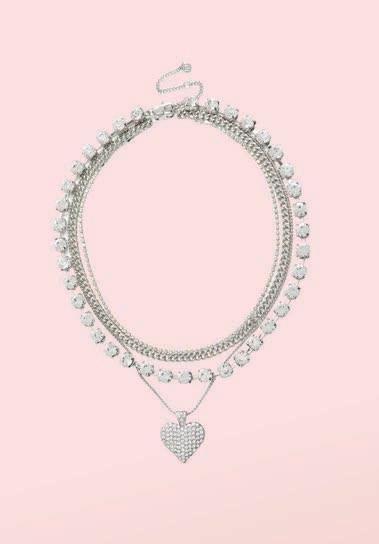

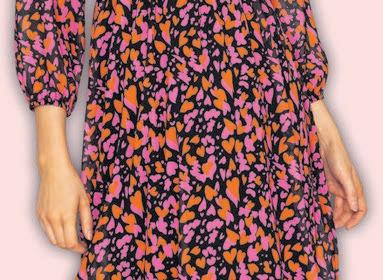


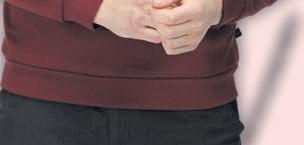
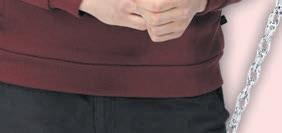

Kilkenny is home to the most famous cats in the world. For over two hundred years, people everywhere have heard of the fierce Kilkenny Cats. They are part of our history; part of our DNA. They reflect Kilkenny in all its glorious past, its developing present and exciting future. The Kilkenny Observer has invited local author Donal Cadogan and illustrator Gemma Aloisi to share their unique view of Kilkenny’s history and culture, as seen and told by its magnificent and ever-present Kilkenny Cats. These are taken from their recent illustrated children’s book We are Kilkenny Cats! It is proving to be a great way to get children to learn about the story of where they are from. Martin Luther King once said “We are not makers of history. We are made by history.” Over the coming weeks the cats that saw our history being made, will help us understand what history has made us. Up the cats!


Our city, our history, as told by some famous Kilkenny Cats
NORA A KILKENNY CAT
Hello. My name is Nora and I am a Kilkenny Cat. I am named after the mighty River Nore which travels through the county of Kilkenny from top to bottom. Like the Nore, I can be strong and erce when I need to be, yet gentle and peaceful at other times. e river looks after the people of Kilkenny, as do I.
I will tell you what it means to be a Kilkenny Cat and let you meet other cats from my family tree, which stretches back before written history began. I like to think there is a little of each of these cats in me. You will nd magical cats, holy cats, ghting cats, rich cats and poor cats. Some are mean but most are kind.
Most cats had a human owner. ey minded and protected each other. Over time, they began to look and act like each other which is why their stories are the same as the humans’ history of Kilkenny.
At the end of our journey, when you understand better how my family has made me the proud cat I am, I will tell you the legend of how Kilkenny Cats got their name.
Welcome to my family. ey are the cat’s meow.
BAWNY THE LEGENDARY CAT
Long, long ago, long before your time, there lived a mouse in a cave in a place called Derc Ferna. Today it is known as Dunmore. is was before a place called Kilkenny even existed. His name was Luchtigern, an old Irish name. In Irish luch means ‘mouse’ and tigern meant ‘lord’, for Luchtigern was the mouselord of all the lands around Dunmore and far across Ireland.
But my ancestor Bawny, a fearless warrior cat, came and a mighty battle followed. His real name was Banghaisgidheach*, but we all called him Bawny for short. He was one cat against an army of mice. He should never have had a chance but he was huge and a hellcat and, with sharp tooth and pointy claws, he killed mice in their thousands until only he and Luchtigern were left. ey fought each other for a day and a night but in the end, Bawny won, and the mighty reign of the Kilkenny Cat started.
Bawny’s story was so famous it was recorded in the Book of Leinster in the 12th century.
You can still visit the cave today. It is the darkest place in Ireland. If you go there, into the deepest part of the cave, some cats still say you can see two bright shining lights in the dark. Are they Bawny’s eyes?
He hasn’t gone away, you know. *Pronounced: Bawn–gashkuh-duck
OSSIE THE CHIEFTAIN’S CAT
Nearly two thousand years ago there were two big kingdoms in Ireland, Leinster and Munster. ey were next door neighbours and were always nding reasons to ght. In between were lands with large forests around the river Nore. e people living there became very annoyed at armies always running across their elds chasing each other. ese people called themselves the Osraige, which means People of the Deer, and their Kingdom was called Ossory. ey decided to elect a king to keep the armies out so that they could live in peace and quiet for a few years. His name was Aengus. But Aengus needed help in his great task. Did he look for help from a deer? No! He needed someone who wouldn’t pussyfoot around. He turned to a fearless royal cat who he called Ossie. She was also my ancestor.
Together, Ossie and Aengus kept the two other armies (and their mice) apart and the people of Osraige settled down. For nearly a thousand years they called the lands along the river Nore their home. In fact their descendants were still powerful in the land until the 16th century, when they were pushed aside. But by then, my family had added many more famous cats to the Kilkenny story.
‘We are Kilkenny Cats’ is available in Kilkenny bookshops
Nora, a Kilkenny cat
